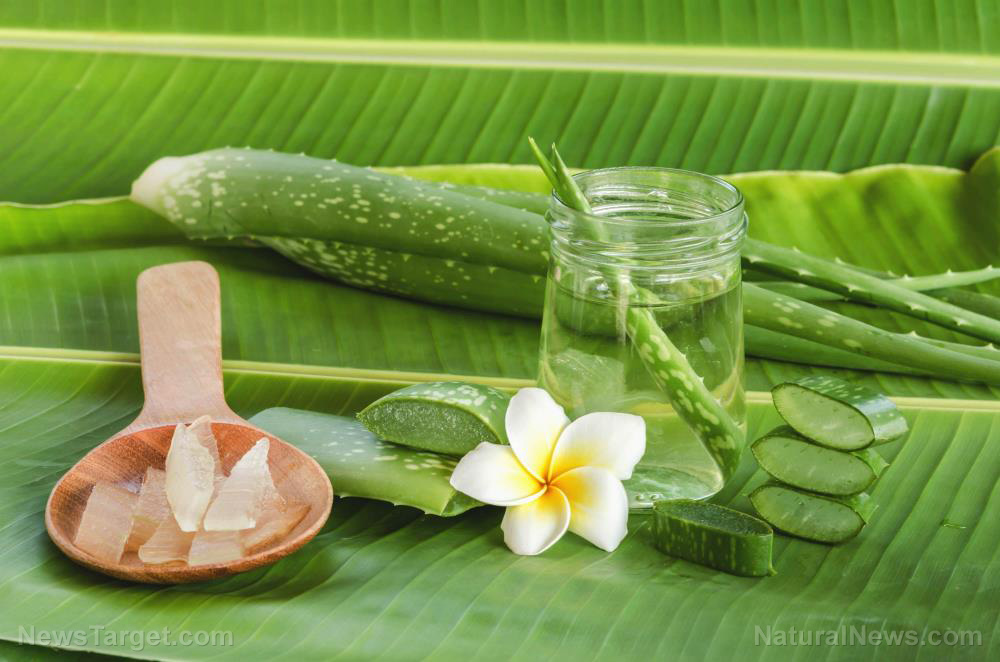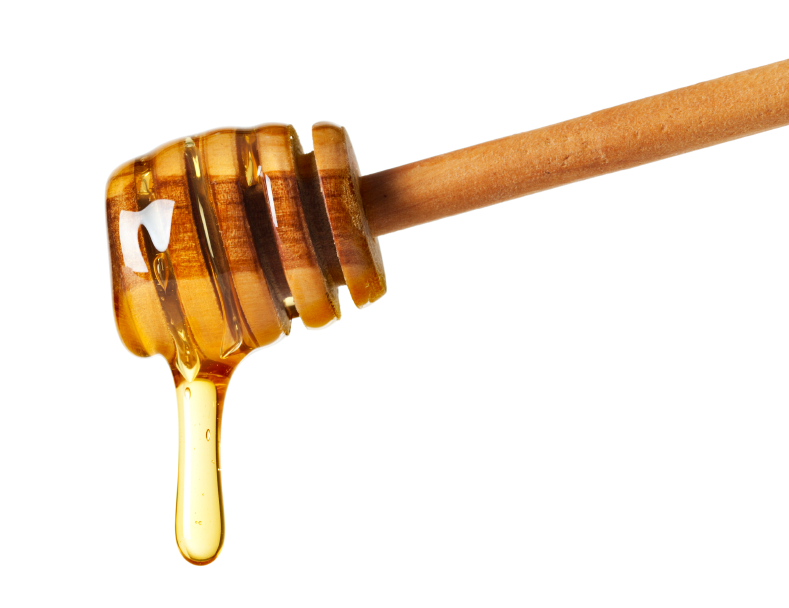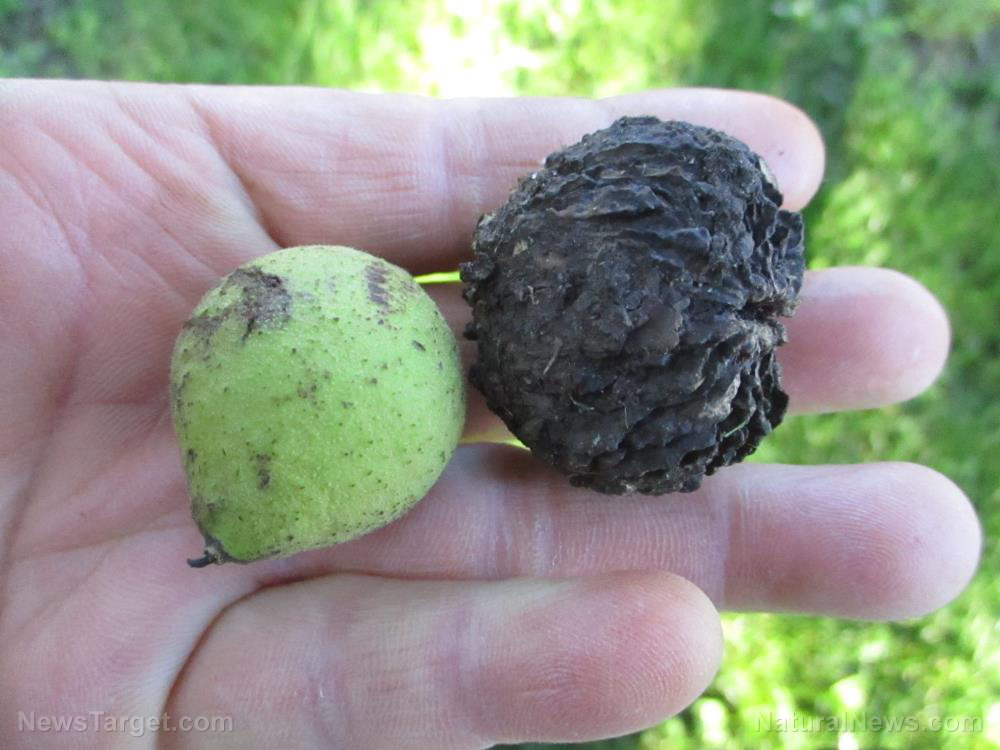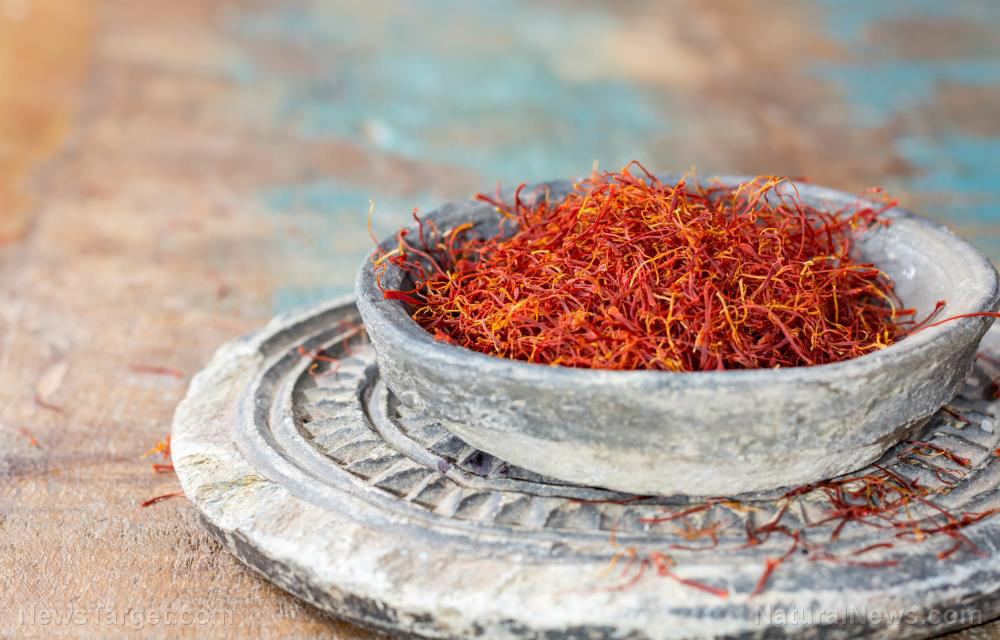Not all salts are equal: 20 Ways to use Himalayan salt – the purest salt on Earth
03/02/2022 / By Olivia Cook
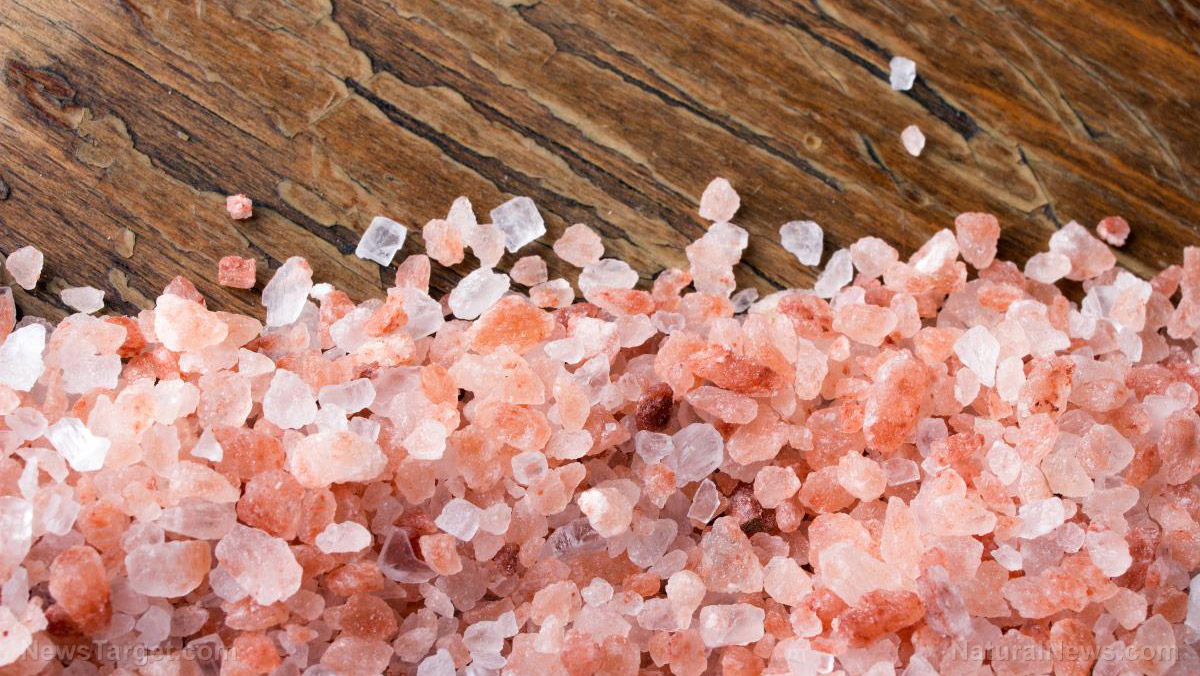
Himalayan salt is hand-extracted from the Khewra Salt Mines located in the Himalayas mountain ranges that fall in Punjab, a province in Pakistan. It is believed to have been formed millions of years ago from the evaporation of ancient bodies of water, and is said to be the purest salt on Earth.
Mined Himalayan salt is minimally processed to yield an unrefined “raw” product that is free of additives and thus, healthier than everyday much-processed white table salt or sea salt that may contain high amounts of lead, arsenic, mercury and other heavy metals.
Himalayan salt contains up to 98 percent sodium chloride while the rest is consists of about 85 different naturally occurring minerals and trace elements, including potassium, magnesium and calcium, which gives the salt its light pink tint or hue. This salt is popular among health food advocates because its overall sodium content is lower compared to regular table salt or sea salt.
It can come in the form of finely ground particles, large rocks, blocks, plates and crystals. It can also come in pink, purple or black/grayish-brown colors. The pink Himalayan salt is found to be the richest in anti-oxidants that help neutralize harmful free radicals in the bodies.
Himalayan salt stands out
Coming from the Himalayas mountain ranges, Himalayan salt quite literally stands out from the rest. Here are 20 of the many ways you can use it in no particular order.
For musculoskeletal health
One study published in the Journal of Physiological Anthropology found that full-immersion bathing or soaking in a Himalayan salt bath in warm water for 10 minutes can reduce fatigue, stress and pain from sore muscles, and increase feelings of contentment and emotional health. With minerals such as calcium and magnesium, this soak can help recharge energy, promote skin hydration, bring relief to skin conditions and help replenish the body’s minerals.
For respiratory health
Salt therapy (also known as speleotherapy) started from an 1843 salt mine when a physician realized that the mineworkers did not showcase the typical respiratory issues associated with other types of mines. Over time, Himalayan salt lamps have become a health trend and are referenced as a natural treatment to improve the health of patients with respiratory problems like pneumonia and chronic bronchitis, as explained by Dr. John Mark, clinical professor of pediatric pulmonary medicine at Stanford University in California.
According to the American Lung Association, halotherapy (breathing in air with tiny salt particles) or salt therapy, may relieve symptoms of chronic obstructive pulmonary disease or asthma. The theory is that when you inhale tiny Himalayan salt particles, they’ll pull water into your airways, thinning out mucus and reducing inflammation in the process. (Related: Why every home should have a salt lamp.)
For oral health
A homemade dental rinse solution can be made using Himalayan salt and distilled or filtered water. Dentists like Dr. Martina Mallery of the International Academy of Oral Medicine and Toxicology (IAOMT) prefer pink Himalayan salt because it derives its color from trace minerals that are very beneficial to enamel remineralization and promotes healing processes of gum tissues that will not work if regular table salt is used for this solution.
Regularly gargling with a Himalayan salt mouth rinse can assist in removing bacteria from the teeth and gums, which helps in preventing the buildup of plaque and tartar. For the sick, a Himalayan salt gargle is a great pain reliever for sore throat. This also breaks up thick mucus and help remove irritants like allergens and fungi from the throat.
The American Dental Association suggests mixing half of a teaspoon of salt with eight ounces of warm water and stirring until the salt is fully dissolved. Swish the mixture around the mouth or gargle for 30 seconds and then spit it out in the sink. Be sure not to swallow the water as it contains some of the bacteria it pulled from your gums.
For improved athletic performance
Himalayan salt is natural, pure, free from additives and contains good trace elements that help improve athletic performance by aiding in hydration, maintaining electrolyte balance and helping muscles contract. Pink Himalayan salt contains potassium (needed for fluid and electrolyte balance, nerve transmission and glucose metabolism), calcium and magnesium (play an important role in bone health and muscle contraction) and iron (vital for red blood cells and the transport of oxygen).
For improved digestion
Mineral-rich Himalayan salt contains lots of electrolytes that are great for detoxing the body and helping the kidney do just that. Drinking sole water, also known as Himalayan salt water, has been recommended by holistic nutritionists to avoid water retention, curb premature aging and maintain a healthy cellular balance. (Related: Himalayan salt can help detoxify the body.)
Sole water is typically done by adding pink Himalayan salt to a glass jar until it is a quarter of the way full, and then filling the rest of the jar with water and letting it sit for 12-24 hours. If all of the salt dissolves, more is added until it no longer dissolves. At this point, the water is considered fully saturated. Proponents of Himalayan salt water recommend drinking 1 teaspoon (5 ml) of this mixture in an 8-ounce (240 ml) glass of room-temperature water every day to reap a multitude of health benefits.
For a healthy scalp and skin
Regular use of Himalayan natural salt skin products can help control many skin conditions, such as dry or oily skin, eczema and acne. It can also relieve viral, bacterial and fungal skin infections. Himalayan salt is a brilliant natural exfoliator that will blast away dead cells for softer, brighter-looking skin. While salt can be drying, the minerals in Himalayan salt help to restore deep hydration to the skin. Himalayan salt can also loosen away any dandruff or product build-up that you might have on your scalp.
For food preservation
Salt-curing has been a common practice since ancient times along with other traditional preservation methods like smoking and air/sun-drying to preserve fish and meats that would last them through tough times like drought, extreme weather and war. Salt preserves fish and meat by sucking the water out, retarding spoilage and concentrating flavor. Salt kills spoilage-causing bacteria. No bacteria means no spoilage.
For enhancing the taste of food
As a food seasoning, Himalayan salt is naturally rich in iodine and tastes better on eggs, vegetables, sauces, marinade and other food at the dinner table. Himalayan salt contains no additives and will not introduce any chemicals or impurities to food – unlike regular table salt, which is highly processed and contains fewer minerals and more sodium.
As a cooking surface (cooktop) and serving platter
Himalayan salt slabs, blocks, plates and bricks are nature’s cooktop and serving platter in one, offering many creative culinary uses while delivering the benefits of natural, pure salt.
For cooking: Himalayan salt slabs can be heated to as high as 450 degrees Fahrenheit and used to lightly sear all sorts of quick-cooking foods. To heat using a gas burner, place dry Himalayan salt slab over a low gas flame for 15 minutes. To attain a higher temperature, heat for an additional 15 minutes on a medium-high gas flame. Once thoroughly heated, Himalayan salt slab is ready to sear the food. Place the thoroughly heated salt plate on a heatproof surface before lightly tossing meat, fish or vegetables. Add a drizzle of olive oil onto the heated slab, then cook to desired doneness, stirring and moving around the salt plate just like any grilling surface. Remember that less oil will cause more salting of food and vice-versa. The salt block will retain the heated temperature for 20 to 30 minutes.
For use as serving platters: Chill Himalayan salt slabs in the refrigerator for serving items, such as sushi, appetizers, cold meats and cheeses, fresh fruit and vegetables and even cold desserts. Moist foods will pick up more salty flavor while their denser and drier counterparts will be presented beautifully and imaginatively.
As a barter item for preparedness and survival
Pure Himalayan salt has no additives, no expiration date, will not lose flavor or degrade and will last virtually forever if stored correctly. Processed salts, such as iodized salt, have a shorter shelf life (about five years) due to additives like potassium iodide. The all-purpose granulated table salt has an indefinite shelf life according to Morton, but an anti-caking ingredient (i.e., sodium aluminosilicate, magnesium carbonate, calcium silicate) is added to prevent clumping and keep the salt free-flowing. (Related: Why Himalayan salt is the perfect storable barter item for preparedness and survival.)
For pest control
Himalayan salt can also be an effective pest control spray. Simply mix two tablespoons of Himalayan salt with one gallon of water. Transfer it in a bottle and spray affected areas in the home and backyard. Sprinkle salt in window sills to help fend off ants, snails and slugs.
Backyard scientists claim that salt kills insects by zapping moisture away from a lot of their exposed parts and mucus (that’s made from water). Slugs and snails can’t stand salt because it dehydrates them to death. Also, some theories claim that salt penetrates ants’ and other insects’ exoskeletons and wreaks havoc inside their bodies.
For growth and overall health of all farm animals and for attracting wild game
Himalayan salt licks are 100 percent natural crystal salt used for the growth and overall health of farm animals and for attracting or luring various wild game animals.
For extinguishing grease fire
Himalayan salt is 98 percent sodium chloride and is therefore non-flammable or combustible and completely safe to use to extinguish grease fire on the stove as it will smother the fire by forming a barrier between the fire and air in the same way dry powder extinguishers put out fires.
For removing something sticky or nasty melts on iron
Sprinkle a generous amount of salt on a sheet of paper. Move hot iron in a back and forth motion over the salty paper for about a minute or two to remove stains and other gunk on the soleplate. The salt will grab the residue and clump it up onto the paper. When done, unplug the iron to let it cool. Once the iron is cool, wipe away the salt with a dry and soft cloth over the soleplate.
For disinfecting and removing hard water stain on bathroom tiles
Himalayan salt works well as a gentle abrasive and helps in cutting down the most stubborn hard water stains on your bathroom tiles. Because of its antibacterial properties, Himalayan salt is also a great disinfectant that kills the germs present in the bathroom. Sprinkle salt on a wet bathroom floor and leave it for half an hour or longer. Scrub off the salt using a brush or sponge. The longer the salt stays on the bathroom tiles, the more effective it is removing the stains.
For absorbing odors
Many people are ditching the toxins and are turning to more natural deodorizers such as Himalayan salt massage bar and deodorant. Pink Himalayan salt not only neutralizes odors, but its antibacterial properties kill the bacteria that cause the odor in the first place. The minerals in the salt deodorant also nourish the skin. Simply wet Himalayan salt stone and rub it on the skin just like deodorant. Wet the stone after a shower and rub it over the whole body. Dry the stone to store it. If sharp pieces form on the stone from getting wet, just sand them down once in a while to protect delicate skin.
For cleaning cast iron skillets and pots
In the wild, if cast iron cookware is gunked up with grease and bits of food, there’s a way to make an excellent dishwashing paste using Himalayan salt and a little water to scrub the cast iron skillets and pot clean. To speed up the process, boil a small amount of water in the pot, add some salt and use a long-handled brush to whisk away the burned-on food particles.
For cleaning and disinfecting sponges
Soaking sponges in Himalayan salt water will kill bacteria and other germs that stink and can make a person sick. For best results, put cleaning sponges in boiling Himalayan salt water and allow to soak for 20 minutes and rinse. Air dry the cleaning sponges and use them as needed. This can help get more wear out of the cleaning sponges rather than getting grossed out with them and throwing them away.
For removing rust from metal tools
While vinegar by itself is a mild acid, salt increases the acidity of the solution and lets it chew rust even faster. Rub Himalayan salt all over the rusted area intended to be cleaned. Once it’s coated, cut a lime or lemon in half and squeeze its juice onto the Himalayan salt. Let the Himalayan salt and lemon or lime juice mixture remain on the item for two hours, then scrub it off.
For preventing mold
Water with Himalayan salt kills single-cell organisms, such as mold spores, by dehydrating them. This works best on small food and clothing items that you can wrap with a cloth saturated with saltwater.
Watch the video below to learn why you should switch to Himalayan salt.
This video is from the Health Ranger Store channel on Brighteon.com.
Other related articles:
Health benefits of Himalayan salt lamps: Fact or fiction?
The health benefits of keeping salt lamps in your home.
How to hide preparedness minerals (emergency nutrition) in plain view with a Himalayan salt lamp.
Sources include:
CountryClubDentalFlagStaff.com
Submit a correction >>
Tagged Under:
antibacterial, deodorizer, food preservative, Himalayan Salt, Himalayas mountain ranges, household cleanser, minerals, non-flammable, salt therapy, sea salt, Table Salt, taste enhancer
This article may contain statements that reflect the opinion of the author
RECENT NEWS & ARTICLES
COPYRIGHT © 2017 NATURAL HEALTH NEWS







